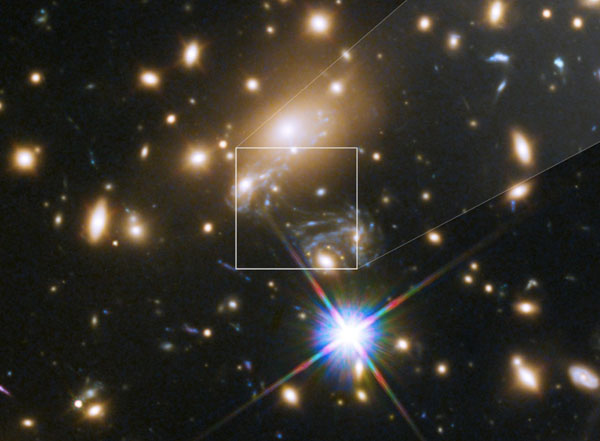Astronomers have observed a star that’s so far away, its light took 9 billion years to reach us here on Earth — about 4.5 billion years before our solar system even existed.
And while scientists have peered at even more distant galaxies, which are visible due to light from their billions of stars, this helium-burning orb, nicknamed Icarus, is the most distant ordinary individual star an Earthling has observed, according to a statement from the University of California, Berkeley. (An ordinary, or main-sequence, star is one that is still fusing hydrogen to create helium; about 90 percent of the stars in the universe fit this bill, including the sun.)
“You can see individual galaxies out there, but this star is at least 100 times farther away than the next individual star we can study, except for supernova explosions,” Patrick Kelly, a former UC Berkeley postdoctoral scholar who is now at the University of Minnesota, said, referring to the explosive and superbright deaths of massive stars.
By Jeanna Bryner – Full Story at Live Science



